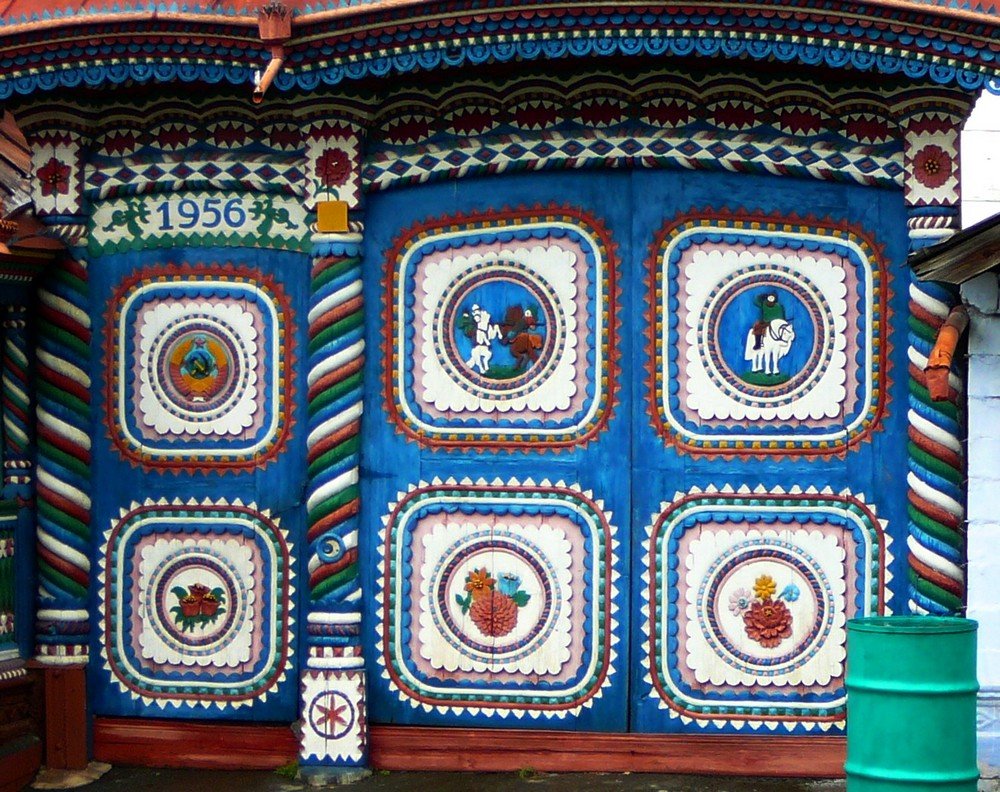#4110. Polychrome Facade of 1956: A Vibrant Example of Folk Decorative Art with Symbolic Panels
The photograph showcases a vibrant and richly decorated facade of a traditional wooden structure, dated 1956, as indicated on the facade itself. This is a magnificent example of folk decorative art with characteristic elements of Slavic or possibly Central European cultural traditions.
The facade is painted in a deep blue color that serves as a background for numerous decorative elements. Compositionally, it is divided into six square panels, each framed by concentric ornamental frames in white and red with scalloped edges. Inside these panels are various symbolic images: floral motifs, stylized animals, and folkloric scenes.
The perimeter of the facade is framed by a striped ornament in the form of twisted columns, combining white, red, and green colors. The upper part is adorned with a wave-like frieze featuring geometric patterns in a red-blue palette. Special expressiveness is added by small decorative details — beads, zigzag lines, triangles, and other geometric elements, creating a rich decorative canvas.
This vibrant example of folk architecture demonstrates the craftsmanship of folk artisans, their love for color and ornament, as well as the importance of symbolic language in architectural decor. Despite the relatively late date of creation (1956), the facade preserves and continues the traditional motifs of folk architecture characteristic of earlier historical periods.
